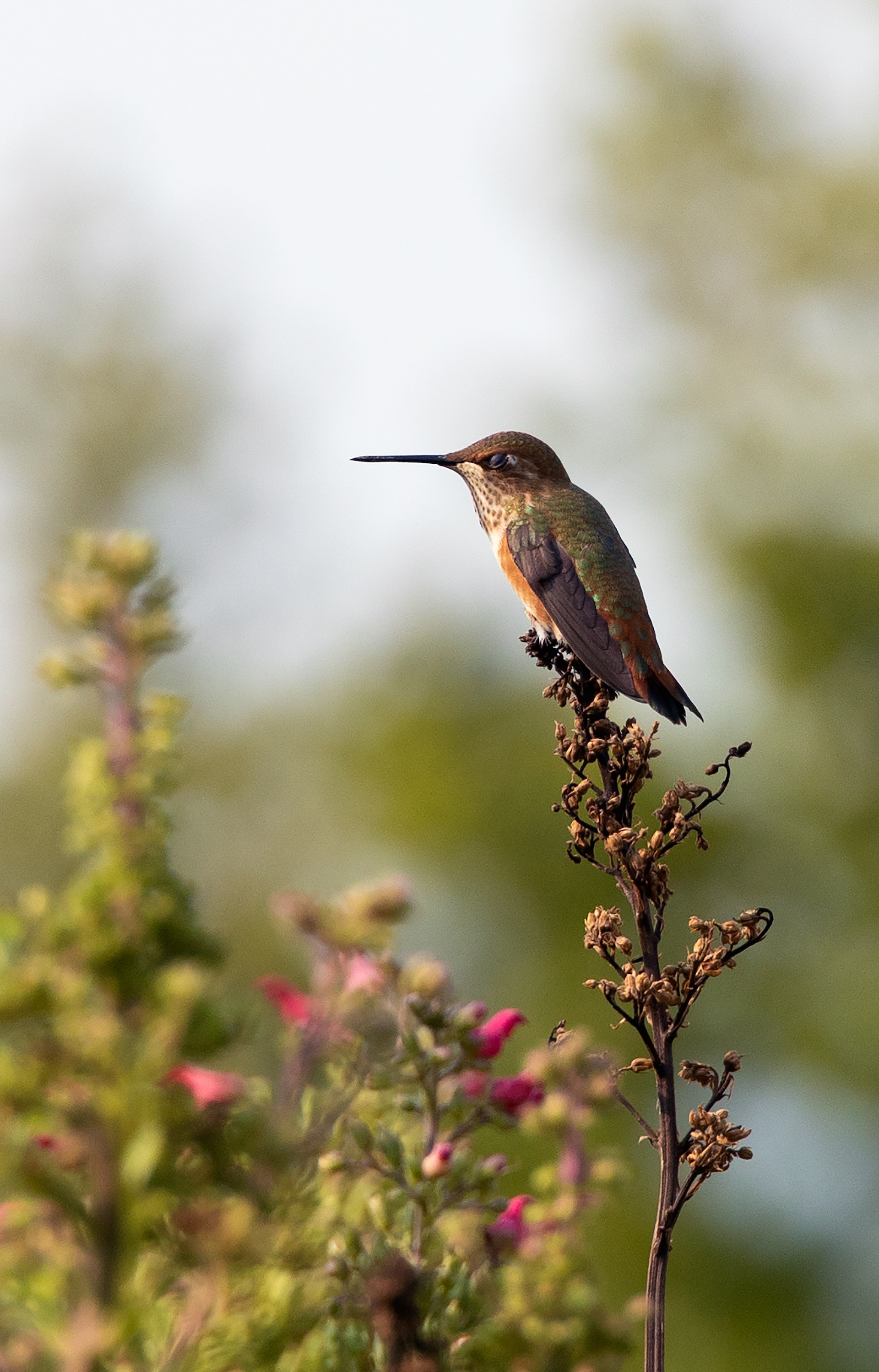The Sleeping Habits of Hummingbirds
Observing a hummingbird in the wild is a delight, but have you ever wondered about hummingbird sleep habits? Unlike most birds, hummingbirds have a unique sleep state known as torpor. This deep sleep allows them to save energy by slowing down their metabolism substantially.
When a hummingbird enters the unique torpor state, its heart rate drops from around 1,200 beats per minute to just 50. Their body temperature also decreases from about 105 degrees Fahrenheit to the ambient air temperature or a minimum of 70 degrees, whichever is higher.
This dramatic slowdown is vital for survival as it reduces their energy expenditure by up to 95%! Without this adaptation, the energy used during the flight could exhaust them, leaving little chance of making it through a cold night.
The Sleeping Positions of Hummingbirds
Unlike most birds, the sleeping position of hummingbirds is quite different. Instead of tucking their heads under their wings and fluffing up their feathers, they sleep while remaining completely upright.
Embracing the unusual upright sleeping position, hummingbirds keep their tiny feet clamped tightly to a perch. By doing so, they help their bodies maintain balance and protect against the risk of tumbling during their deep torpor state. This upright position further safeguards these birds by making them appear less appealing to predators at night.
The Sleeping Locations of Hummingbirds
In addition to their distinct sleeping habits and positions, hummingbirds also show preference when choosing their resting places. These small birds are known to select sleeping locations offering safety from predators and protection from elements.
Hummingbirds prefer to sleep on smaller, more delicate branches that wouldn’t support the weight of bigger birds or predators. The preferred nesting habits of hummingbirds involve situating their nests in well-camouflaged locations, often using lichen and spider webs as cover. This choice of sleeping location ensures these tiny creatures can get the rest they need and awake, ready for a new day of non-stop motion.
Protecting Hummingbird Sleep Habits
As nature enthusiasts, it’s essential to respect and support the sleep habits of hummingbirds. In the grand scheme of preserving nature and biodiversity, little things like maintaining the right type of garden with hummingbird-friendly plants and feeders can make a big difference.
- Plant native flowering plants: Native tubular flowers with bright colors like red, orange, and pink, high in nectar, are particularly attractive to hummingbirds.
- Safe habitat: Providing a safe habitat full of trees and shrubs can provide safe sleeping locations for these birds.
- Maintain feeders: Regularly clean and refill the feeder with fresh nectar to ensure a regular food source.
By maintaining an ecosystem favorable for their sleep, you are actively helping these tiny marvels thrive in your backyard. Remember, though tiny, hummingbirds play an essential role in maintaining the balance of nature by pollinating flowers as they flutter from one to another.
<small>Image source: https://unsplash.com/photos/brown-and-green-humming-bird-on-green-plant-during-daytime-4Yc39BwOjZQ </small>

